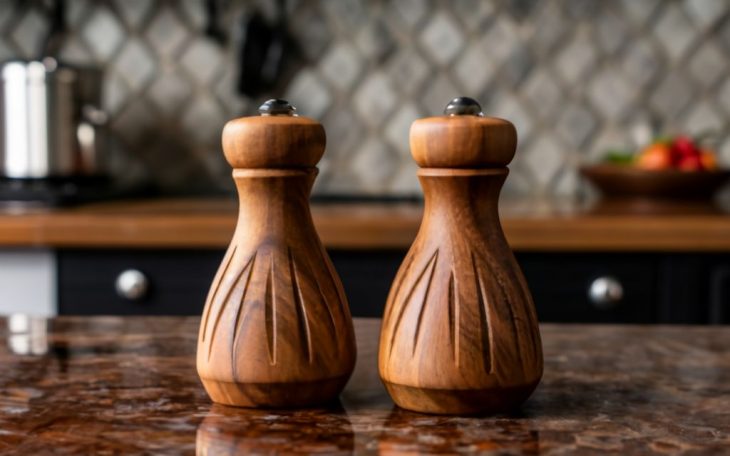Chip carving is the art of decorating wood furniture, doors, spoons, religious fixtures, spoons, chests, boxes, clocks and just about anything that is made from wood. It can make an otherwise plain object a piece of art worth many times the cost of the original construction. Great care and skill must be employeed in making the angled cuts. A workshop full of tools is not needed in order to preform chip carving. Some chip carvers say that all that is needed is a couple of special though inexpensive knives, while others prefer just a few more.
There is no end to variety of designs that can be concieved for chip carving. Chip Carving is accomplished by making angled cuts into wood which results in clean chips being removed from same. The chips are removed to form a pattern or shape of one kind or the other. The design could be a geometrical pattern, the shape of a person, an amimal or just about anything the imagination can come up with.
Chip carving has been practiced in most countrys over many centuries and examples can be found in each of them. Ceremonial tool handles and boat paddles have been found in the South Pacific Islands which were carved with repetitive deep cuts, likely done with pieces of sea shells, bits or bone or even sharks teeth. Like carvings done today they must have taken many hours to complete.
The art of chipcarving owes much to the northern countries of Europe, including England and Ireland. Churches in Northern Germany which were built in the 8th century have examples of this type carvings done in stone.
During the Gothic Period from the late 1100s through the early 1500s the stone mason was second to no other craftsman. The art of woodcarving thrived but took a backseat to stone masonery. Great cathedrals were built during this period due to the invent if Gothic Architecture. There were no architects in those days to calculate the angles and draw up the plans. There was no computer aided draftsmen to help. All they had were what they called master planners. The stone masons took the master planners plans and inturpeted them in their own way. The craftsmen came from all over to help construct the great buildings. There were lodges provided for this multitude of stone masons and craftsmen to stay in. These Lodges were the origins of the Masonic Lodges of today. When a great building was completed the craftsmen would move on to another one.
At the very beginning of the Gothic Period the interior decoration of the cathedrals were done almost completely in stone. A little later wood was introduced. The woodcarvers imitated the carvings which had been done in stone. As time went on, woodcarvers seemed to realize that they were not limited in what they could do as the stone masons were. The propertys of wood offered a medium in which intricate designs and patterns could be carved. This was something that could not be done in stone. Examples of this can be seen in the elaborate decorative carvings on pulpits, choir stalls, alters and other church fixtures. The woodcarvers had become experts in their field and the carvings continued to become more and more elaborate. The art had made a 180 degree turn and now the stone carvers were trying to imitate the woodcarvers. Even today, the architecture of the Gothic Period serves as an almost limitless bank of ideas for the modern chip carver.
In Sweden during the 1700s and 1800s chip carving was commonly used to decorate chairs, tables, clocks and other household furniture. The influence of this type carving has spread throughout the world through imigration and schools set up to teach the subject. Modern day chip carvers benefit from the wealth of information that has been accumulated over the centuries and experience that has been passed down from carver to apprentice and from carver to student. This is a continuing process teaching and sharing of experiences and ideas


Recent Comments